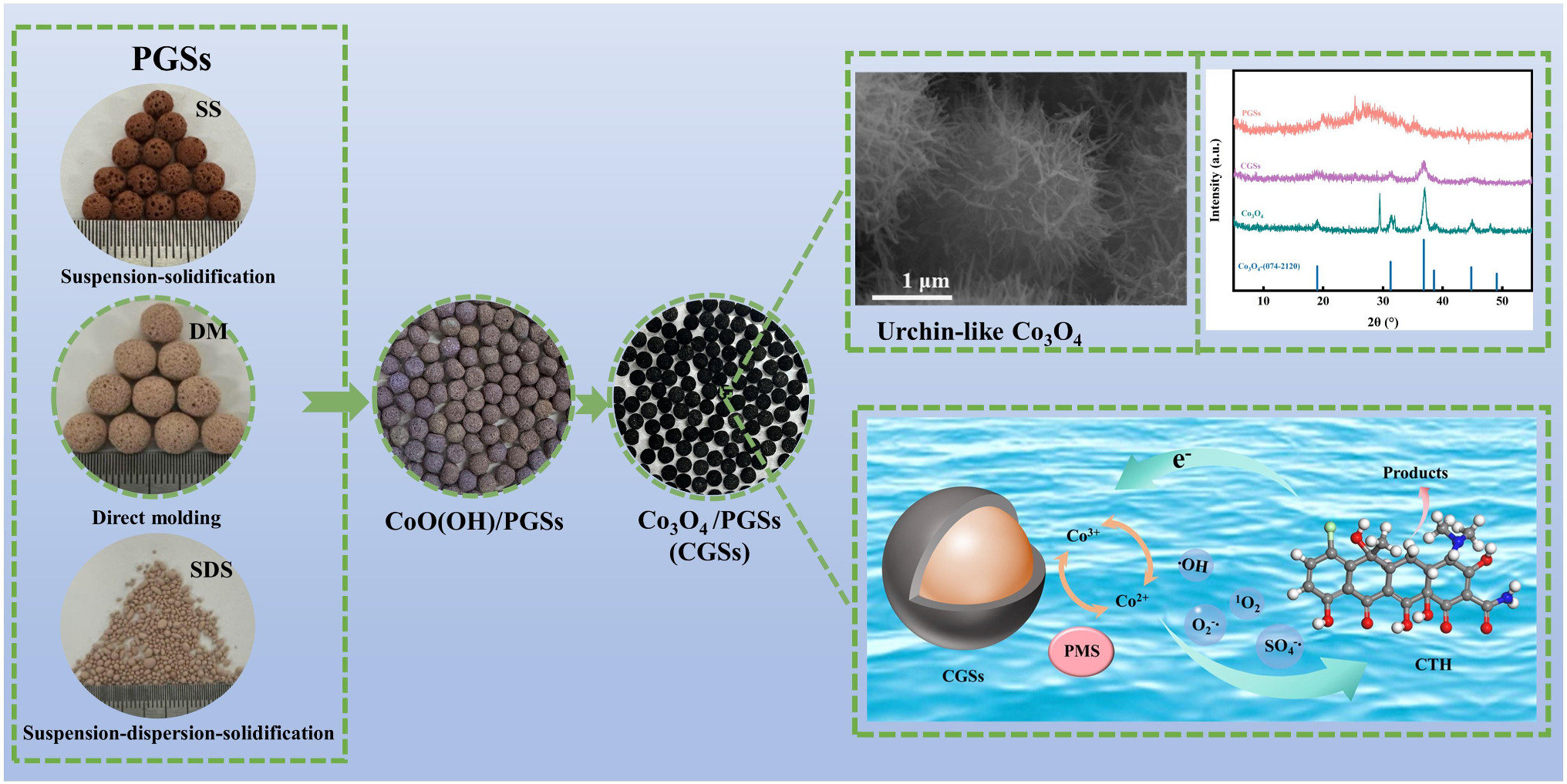https://doi.org/10.1140/epjp/s13360-025-06666-6
Regular Article
Urchin-like Co3O4 growth on porous metakaolin-based geopolymer spheres for catalytic degradation of chlortetracycline antibiotics
1
Key Laboratory of Superlight Materials and Surface Technology, Ministry of Education, College of Materials Science and Chemical Engineering, Harbin Engineering University, 150001, Harbin, China
2
Joint Key Laboratory of the Ministry of Education, Institute of Applied Physics and Materials Engineering, University of Macau, Avenida da Universidade, Taipa, 999078, Macau SAR, China
3
School of Materials Science and Engineering, Lanzhou University of Technology, 730050, Lanzhou, China
a chengyingbai@hrbeu.edu.cn, chengyingbai@163.com
Received:
1
May
2025
Accepted:
17
July
2025
Published online:
12
August
2025
Porous metakaolin-based geopolymer spheres as catalytic supports with various diameters were prepared using suspension-solidification, suspension-dispersion-solidification, and direct molding methods. Urchin-like Co3O4 was in situ grown on the surface of the spherical porous catalytic support. Four catalytic supports and catalytic routes (photo, Fenton-like, sodium percarbonate, and peroxymonosulfate) were compared. Co3O4/geopolymers by direct molding with peroxymonosulfate were optimized and a high degradation efficiency of 86% for chlortetracycline hydrochloride within 90 min. The catalytic mechanism was elaborated. Additionally, the Co3O4/geopolymer composites showed good repeatability, maintaining a degradation efficiency of 78% after four consecutive cycles.
Supplementary Information The online version contains supplementary material available at https://doi.org/10.1140/epjp/s13360-025-06666-6.
Copyright comment Springer Nature or its licensor (e.g. a society or other partner) holds exclusive rights to this article under a publishing agreement with the author(s) or other rightsholder(s); author self-archiving of the accepted manuscript version of this article is solely governed by the terms of such publishing agreement and applicable law.
© The Author(s), under exclusive licence to Società Italiana di Fisica and Springer-Verlag GmbH Germany, part of Springer Nature 2025
Springer Nature or its licensor (e.g. a society or other partner) holds exclusive rights to this article under a publishing agreement with the author(s) or other rightsholder(s); author self-archiving of the accepted manuscript version of this article is solely governed by the terms of such publishing agreement and applicable law.





